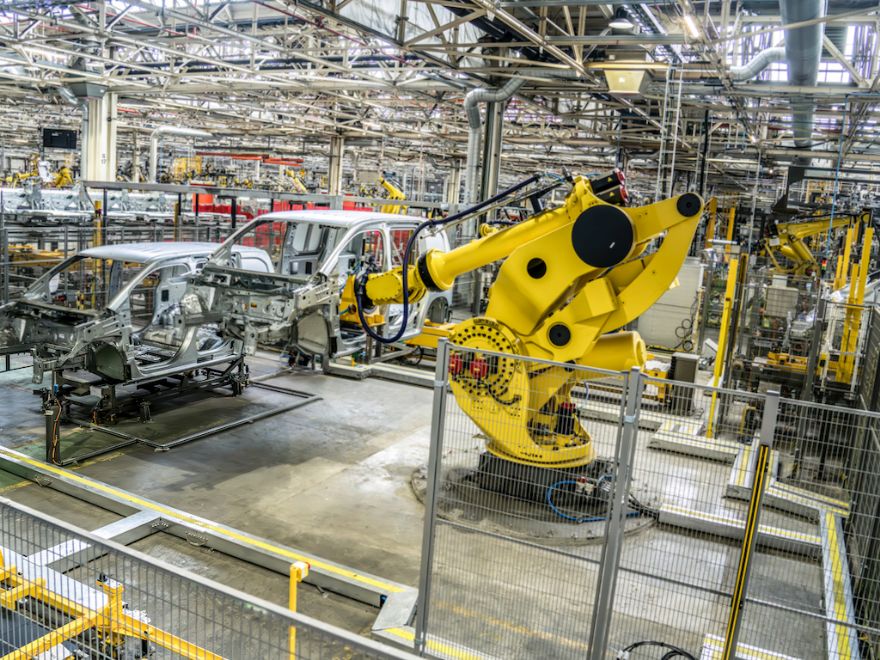
The UK automotive industry has pledged to build on the foundations laid by the Government’s landmark Industrial Strategy – published earlier this week – with a 10-point plan to propel the UK back into the top 15 of global vehicle manufacturing locations by 2030 and deliver a £50 billion economic boost over the next decade.
Speaking at the industry’s annual International Automotive Summit in London, Mike Hawes, chief executive of the
Society of Motor Manufacturers and Traders (SMMT), welcomed the news. He said: “The Government’s long-term Industrial Strategy, including the Drive35 £2.5 billion auto capital and R&D fund, recognises the sector as a pillar of advanced manufacturing, integral to the world leading innovation that creates the high-value jobs, wealth and economic growth that are vital to our country’s future. Now we must make the most of that position and put in place the right conditions for growth.”
The strategy comes as a new SMMT paper,
The Competitive Edge: Driving Long-Term UK Automotive Growth, sets out a path to success. The report, which features the SMMT’s first
UK Automotive Business Leaders Barometer, charts the industry’s fundamental strengths and potential, with more than half of businesses having recently secured, or planning for, investment. But it also reveals, unsurprisingly, low confidence in global trading conditions and doubts about the ability to meet ‘net zero’ ambitions, amid rising costs and falling profitability.
Almost three-quarters (73.5%) of the CEOs surveyed said their business costs had increased in the last year, with 46.9% reporting falling profits. The sector also faces some of the world’s toughest market regulation and compliance costs — factors which must be addressed urgently to create a level playing field that anchors existing investors and creates the right conditions for further growth.
UK automotive manufacturers pay more for electricity than anywhere else in Europe – more than double the average – due in part to energy taxes six times higher, which added over £200 million to manufacturers’ bills last year alone.3 Rapid implementation of the reforms to industrial energy costs set out in the Industrial Strategy would cut the sector’s electricity bill by a fifth, helping ease this structural disadvantage. To level the playing field, however, the proposed relief on standing charges – which will apply to battery manufacturing – should also benefit automotive manufacturing, given the sector will become more electricity-dependent as it increasingly builds EVs.
Current uncompetitive production costs must also be set alongside uncompetitive market costs. Manufacturers have incurred a £6.5 billion electric vehicle (EV) incentives bill over the last 18 months to shore up EV demand that remains stubbornly behind mandated Government targets – with more than half (52%) of CEOs believing the UK is significantly behind track to meet the 2030 end of sale date for new cars powered solely by combustion engines. Consumer demand has been further damaged by governmental disincentives such as the VED Expensive Car Supplement (ECS), estimated to impose an effective fine of more than £360 million on EVs bought from April this year.
Bold action requiredThe SMMT says that bold Government action is essential to drive up demand for EVs which manufacturers are compelled to sell, requiring a package of consumer support measures, including amendments to the ECS and cuts to VAT on new EVs and public charging. This would help deliver a vibrant domestic market which is not just a leader in decarbonisation but in affordability.
The SMMT says there is room for optimism, however, as recent UK diplomatic successes – the deal with the USA, which significantly reduces a tariff cost that would have threatened industry viability, as well as the FTA with India, and an EU reset – will help put the UK in a more advantageous position. Together with rapid measures to reduce electricity costs and business rates, reformed capital allowances and a reskilled workforce, the sector’s competitive edge would be restored, providing an additional £50 billion economic windfall and delivering the UK’s ‘net zero’ ambitions, while returning the UK to the top 15 of global automotive manufacturing locations for the first time since 2018.
Mr Hawes concluded: “We welcome the Government’s Industrial Strategy, a 10-year plan which answers our call for a long-term commitment to automotive manufacturing. With action to reduce electricity costs, upskill workers and unlock finance, it lays the foundation on which we can build our future. We now need to see the Industrial Strategy implemented and at pace, because competitors will move fast — our window of opportunity will not remain open for long. The prize, however, in terms of jobs, innovation and economic growth — green growth at that — is worth the investment.”